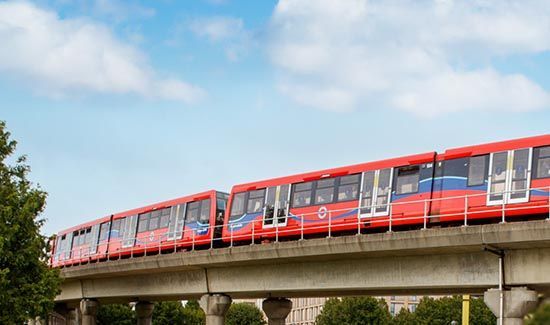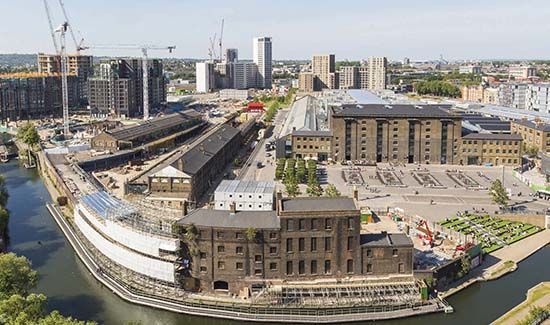Case Study: 22 Bishopsgate

22 Bishopsgate exceeds Better Buildings Partnership (BBP) best practice
Combination of green energy supply & energy management delivers significant carbon savings
5.5K
tCO2e SAVED FROM ENERGY PROCUREMENT
96
DATA VALUES P/DAY
ABOUT 22 BISHOPSGATE
As the second tallest building in London, 22 Bishopsgate is a 1.3 million ft2, 62-storey commercial real estate village, which has established a profile as a next generation collaborative workplace, that sets new standards across the board, including wellbeing and sustainability, in line with a mission statement of “We imagined the building we’d want to work in”. Optimised has been involved since 22BG’s first year in operation, advising on a host of aspects of energy management.
INDUSTRY
Commercial Real Estate
Location
London
SERVICES DELIVERED
Challenge
Supporting their net zero ambitions
Optimised were engaged by 22 Bishopsgate in 2020 to design and implement a utility recharging strategy, to enable the building to engage its occupiers through transparent, near real-time energy data visualisation, via a cloud-based Energy Management System (EMS). We were tasked with monitoring over 2,000-meter points, in order to both recharge utility costs accurately, in line with the Royal Institute of Chartered Surveyors (RICS) guidelines, and engage key stakeholders in energy saving activities. The overall aim of the project was to support the building to achieve its net zero ambitions for operational energy, which means achieving an energy efficiency performance of 70kWh per square meter by 2025 and 35kWh per square meter by 2035-50.
Solution
Combining a cloud-based energy management system with renewable supply
Prior to practical completion (PC) of the 62-storey building, Optimised developed a model to forecast the building’s consumption profile.
Followed by efforts to understand the renewable energy procurement criteria, in line with the landlord’s ESG requirements. Following this, we worked with designers, metering and BMS installers, to configure the EMS to facilitate both the occupier engagement programme, as well as stringent requirements of utility recharging and energy monitoring. Our implementation approach meant we had to build a virtual EMS and utility recharging model, prior to being given access to live data and communications from the building. This enabled us to test our methodology for apportioning energy from building systems, and to create the algorithms that we could simply drop into the live environment after PC.
This ensured that an auditable data trail existed from day 1 after PC. Since implementation, we receive 96,000 values of data every day, which flow directly into a cloud-based EMS. From there it is processed for utility recharging, where we apply secured commodity rates taken from wholesale energy markets, before presenting to each occupier with a valid charge for their utilities, including lighting, power, heating, cooling, ventilation, LTHW and domestic hot water. Various analytical tools are applied to monitor exceptions and drive savings in energy consumption against expected profiles that are constructed using historic trends and weather data.
In order to meet 22 Bishopsgate’s high standards for quality renewable energy, and their ambition to decarbonise their heat, we enlisted one of the UK’s few biomethane plants, in Keithick Biogas based in Perthshire, Scotland. As a result, monthly natural gas consumption in London was to be matched against monthly biogas production in Scotland, allowing the certificates to be surrendered in the name of 22 Bishopsgate. As a result, 22BG will continue to achieve higher quality gas procurement arrangements than most, if not all, other London based commercial real estate buildings.
Thanks to 22 Bishopsgate’s unique volume of meters, we were able to carry out “demand-based-dynamic” recharging. This means that we can use occupancy signals to identify which occupiers are drawing on central heating and cooling plant at any one time. By combining occupancy and energy data, we were able to ensure that charges will now be apportioned fairly, while also providing an incentive for occupiers to focus on behaviours that drive reduced wastage and more decarbonisation.
results
Identifying and targeting energy wastage
The implementation of the technology and analytical engine was executed on time, ready for the building to go live. Following this, we
worked through a range of data health and post-implementation communications issues, to prove the accuracy of the EMS and related
utility recharging methodology. Several alterations ensued, in order to accommodate new meters and client requirements.
Following completion of our technological installation, the 22 Bishopsgate building went live. Now, the building is performing at
approximately 46kWh/m2 (electricity) more efficient than the Better Buildings Partnership (BBP) best practise, for a London based commercial building.
Our green energy procurement strategies were also a great success, delivering the following results:
• 2,473 TCO2e from gas contracts
• 2,949 TCO2e from electricity contracts
22 Bishopsgate’s new technology is now able to achieve greater occupier engagement in the drive towards net zero, while enabling accurate utility recharging - providing the tools for the landlord to identify and target energy wastage, in near real time.
The knowledge and expertise shown by the Optimised team has been critical throughout this project. Right from the get-go, their guidance has covered numerous aspects of energy management, from sourcing bespoke renewable contracts, to revolutionising the way we gather our meter readings. This has been a very exciting project for us, ever since the start, we have aspired for 22 Bishopsgate to become the pinnacle of the modern workplace, a place that gives people the peace of mind that they’re in a safe environment, while also leading the way in looking after the external environment, to the world’s biggest organisations. Which, thanks to the help of Optimised, is fast becoming a reality.
Peter Bicknell
Head of Engineering

RELATED CASE STUDIES

BOOK YOUR 30-MINUTE ENERGY MANAGEMENT CONSULTATION
Fill in your details below to arrange a complimentary consultation with one of our experts. They will give you bespoke advice to help your business achieve all its energy needs, reducing cost, consumption and carbon.











